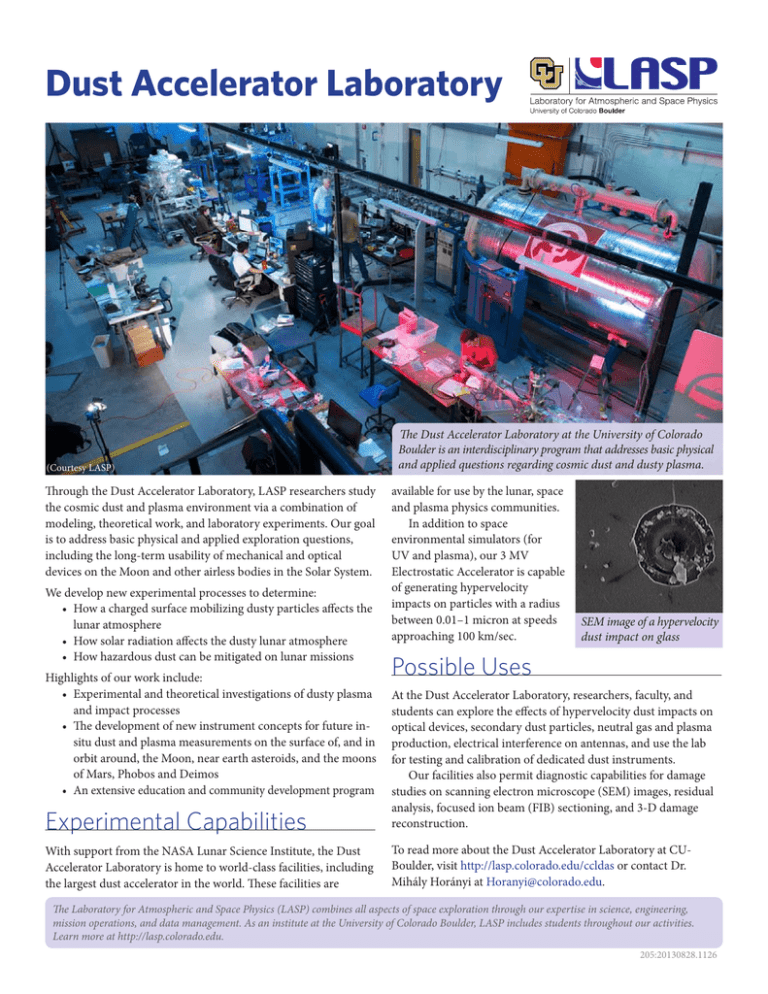Dust Accelerator Laboratory
advertisement

Dust Accelerator Laboratory (Courtesy LASP) Through the Dust Accelerator Laboratory, LASP researchers study the cosmic dust and plasma environment via a combination of modeling, theoretical work, and laboratory experiments. Our goal is to address basic physical and applied exploration questions, including the long-term usability of mechanical and optical devices on the Moon and other airless bodies in the Solar System. We develop new experimental processes to determine: • How a charged surface mobilizing dusty particles affects the lunar atmosphere • How solar radiation affects the dusty lunar atmosphere • How hazardous dust can be mitigated on lunar missions Highlights of our work include: • Experimental and theoretical investigations of dusty plasma and impact processes • The development of new instrument concepts for future insitu dust and plasma measurements on the surface of, and in orbit around, the Moon, near earth asteroids, and the moons of Mars, Phobos and Deimos • An extensive education and community development program The Dust Accelerator Laboratory at the University of Colorado Boulder is an interdisciplinary program that addresses basic physical and applied questions regarding cosmic dust and dusty plasma. available for use by the lunar, space and plasma physics communities. In addition to space environmental simulators (for UV and plasma), our 3 MV Electrostatic Accelerator is capable of generating hypervelocity impacts on particles with a radius between 0.01–1 micron at speeds approaching 100 km/sec. SEM image of a hypervelocity dust impact on glass Possible Uses Experimental Capabilities At the Dust Accelerator Laboratory, researchers, faculty, and students can explore the effects of hypervelocity dust impacts on optical devices, secondary dust particles, neutral gas and plasma production, electrical interference on antennas, and use the lab for testing and calibration of dedicated dust instruments. Our facilities also permit diagnostic capabilities for damage studies on scanning electron microscope (SEM) images, residual analysis, focused ion beam (FIB) sectioning, and 3-D damage reconstruction. With support from the NASA Lunar Science Institute, the Dust Accelerator Laboratory is home to world-class facilities, including the largest dust accelerator in the world. These facilities are To read more about the Dust Accelerator Laboratory at CUBoulder, visit http://lasp.colorado.edu/ccldas or contact Dr. Mihály Horányi at Horanyi@colorado.edu. The Laboratory for Atmospheric and Space Physics (LASP) combines all aspects of space exploration through our expertise in science, engineering, mission operations, and data management. As an institute at the University of Colorado Boulder, LASP includes students throughout our activities. Learn more at http://lasp.colorado.edu. 205:20130828.1126



